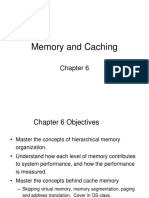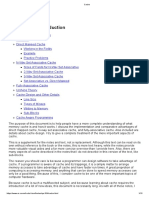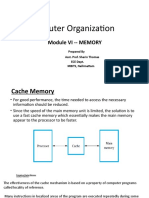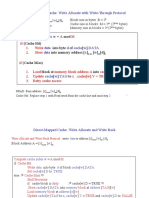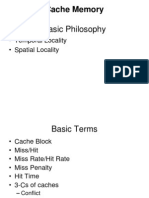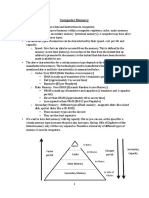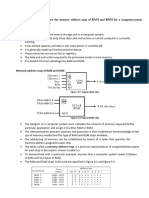0% found this document useful (0 votes)
194 views22 pagesCache Memory Mapping Techniques
The document describes cache memory and how it maps to main memory. It discusses three mapping techniques: direct mapping, associative mapping, and set associative mapping. Direct mapping simplistically maps each main memory block to one cache line. Associative mapping allows each memory block to map to any cache line but requires complex comparison logic. Set associative mapping strikes a balance between the two. Examples are given to illustrate direct mapping, including how to determine the cache address corresponding to a main memory address. Cache memory format and examples of cache hits and misses are also discussed.
Uploaded by
A3 AashuCopyright
© © All Rights Reserved
We take content rights seriously. If you suspect this is your content, claim it here.
Available Formats
Download as PDF, TXT or read online on Scribd
0% found this document useful (0 votes)
194 views22 pagesCache Memory Mapping Techniques
The document describes cache memory and how it maps to main memory. It discusses three mapping techniques: direct mapping, associative mapping, and set associative mapping. Direct mapping simplistically maps each main memory block to one cache line. Associative mapping allows each memory block to map to any cache line but requires complex comparison logic. Set associative mapping strikes a balance between the two. Examples are given to illustrate direct mapping, including how to determine the cache address corresponding to a main memory address. Cache memory format and examples of cache hits and misses are also discussed.
Uploaded by
A3 AashuCopyright
© © All Rights Reserved
We take content rights seriously. If you suspect this is your content, claim it here.
Available Formats
Download as PDF, TXT or read online on Scribd
/ 22
